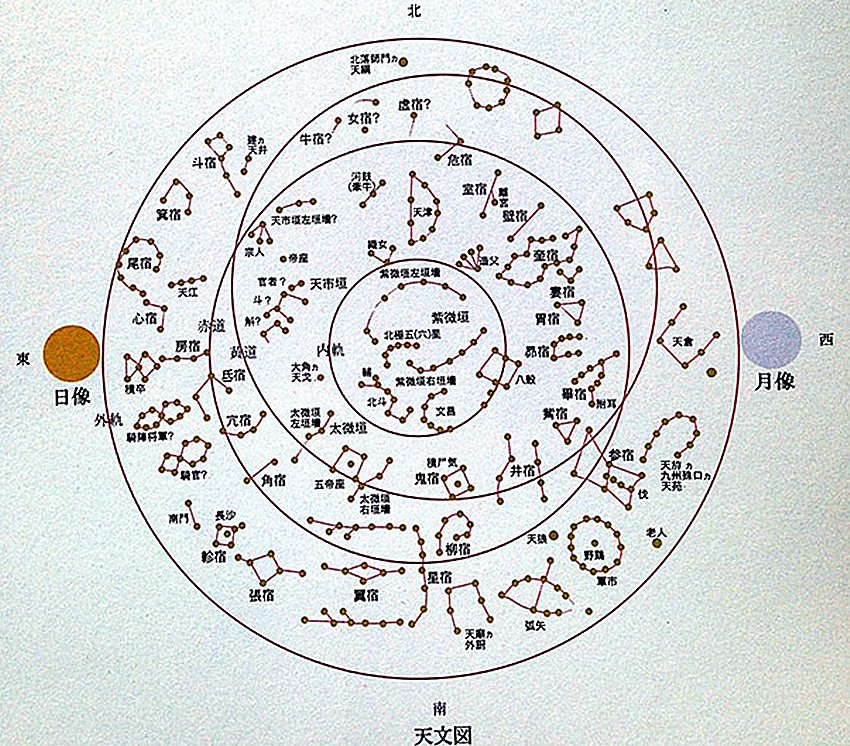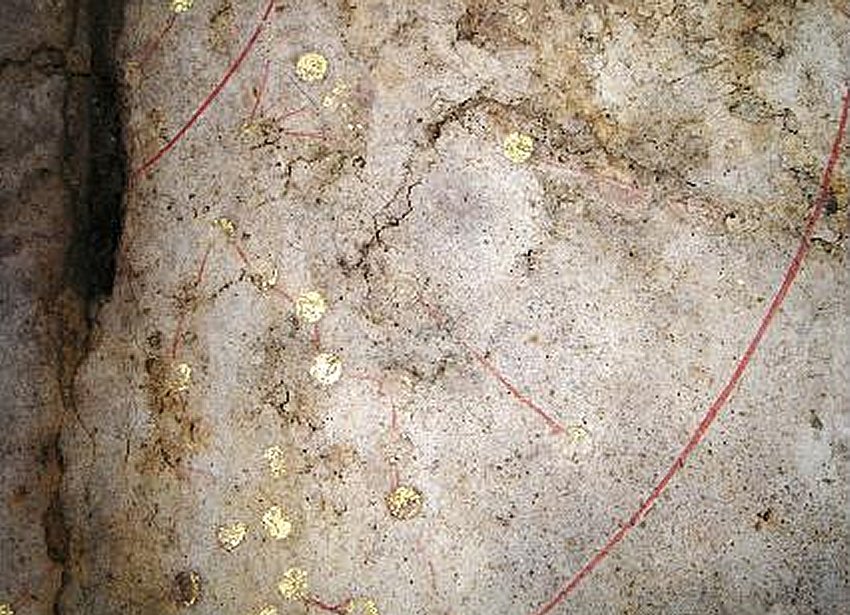MessageToEagle.com – A star chart found on the ceiling in the stone chamber of the Kitora Tomb Asuka, located in Asuka, Nara Prefecture, Japan was based on celestial observations made centuries earlier in China, researchers say.
Discovered in 1983, the Kitora Tomb is an ancient tumulus (in Japanese, ‘kofun‘), which is believed to have been constructed some time between the 7th and early 8th centuries.

The tomb is famous for its richly colored murals.
The star chart features 68 constellations depicted with gold discs. Three concentric circles, along with one representing the apparent path of the sun, portray the movement of celestial objects with the Polar Star at the center.

It’s the oldest extant star map, according to Mitsuru Soma, an assistant professor of position astronomy at the National Astronomical Observatory of Japan, and Tsuko Nakamura, a researcher of modern astronomy with Daito Bunka University’s Institute of Oriental Studies, who work out where in China the stars were observed and when the map was drawn there.
Researchers made separate studies and analyzed precise digital images to come up with their findings.
They cited areas located on the 34th parallel north such as Chang’an (present-day Xi’an) and Luoyang, both of which were the ancient capitals of Chinese dynasties in the middle reaches of the Yellow River, as the most likely observation sites.
With regard to when the stars were observed, Soma concluded it was between the years 240 and 520. Nakamura came up with a time period of between 120 B.C. and 40 B.C.
Soma and Nakamura agreed the stars in the chart were observed several hundred years before the Kitora Tomb was constructed.
The latest discovery could stir up debate about the history of astronomical technology in Japan.
Kazuhiko Miyajima, a former professor of East Asia astronomy history at Doshisha University, has put forward a theory that the Kitora Tomb’s star chart depicts the sky observed in 65 B.C. in either Pyongyang or Seoul, the respective capitals of North and South Korea.
MessageToEagle.com
Expand for referencesReferences:






